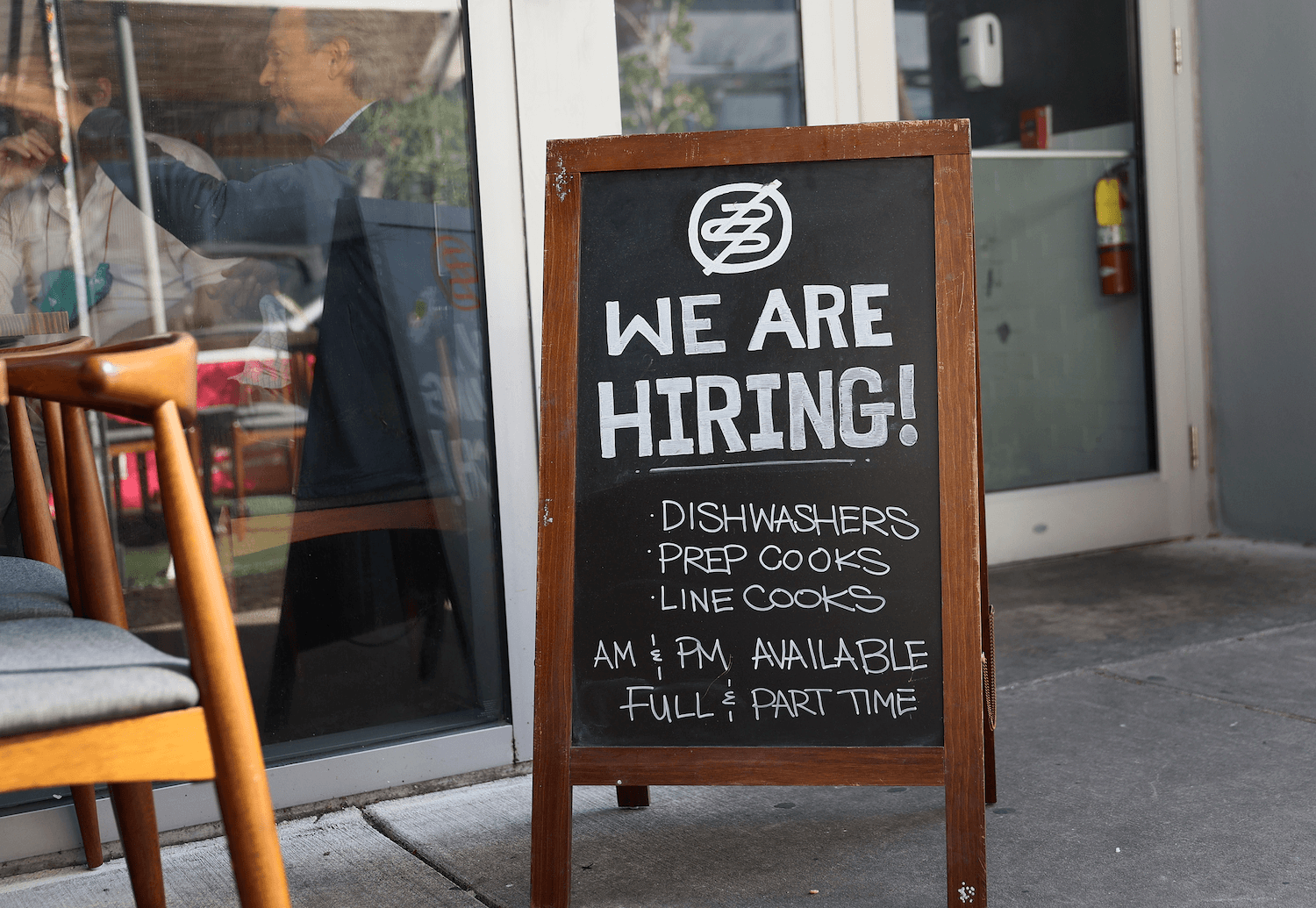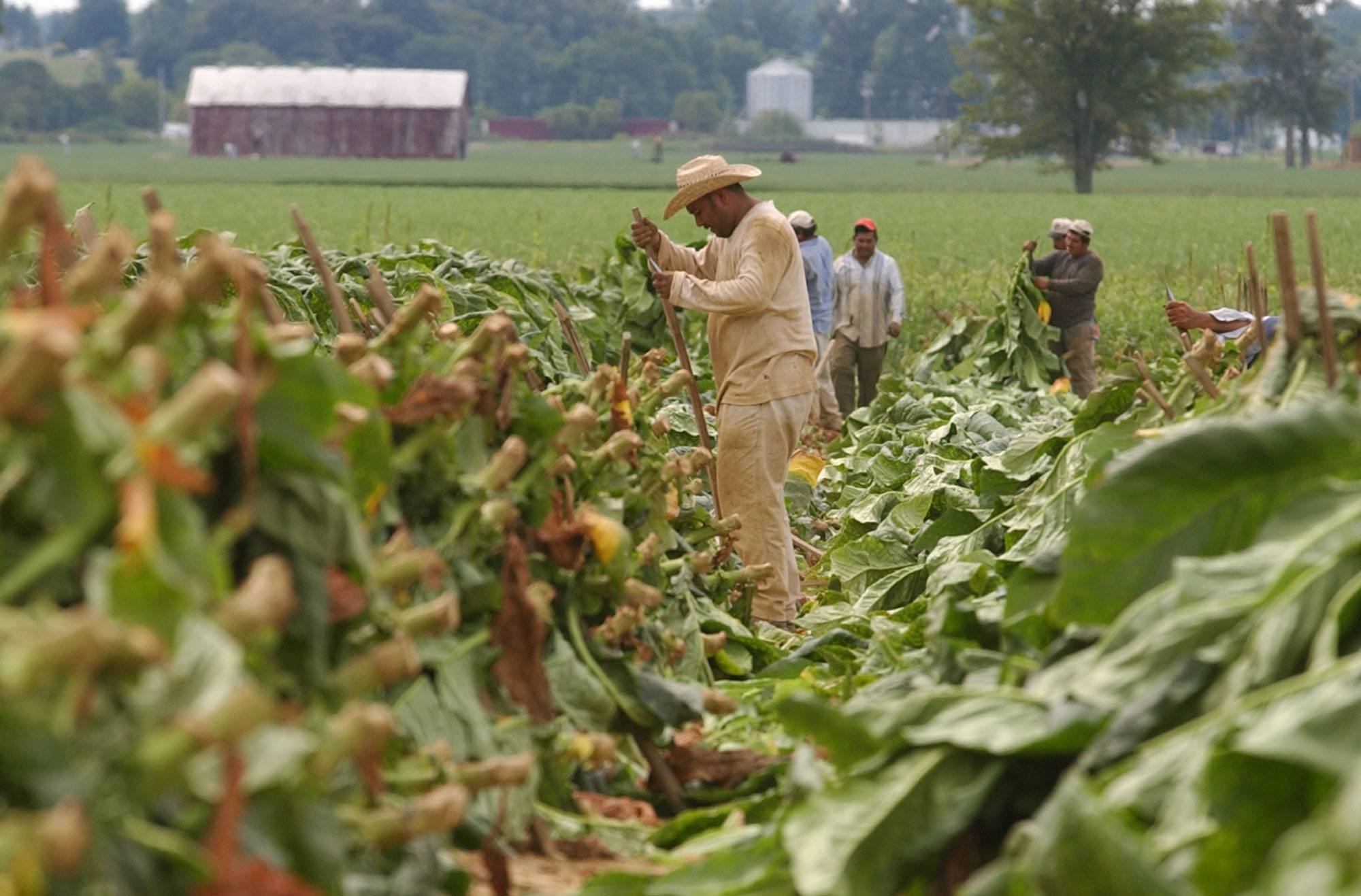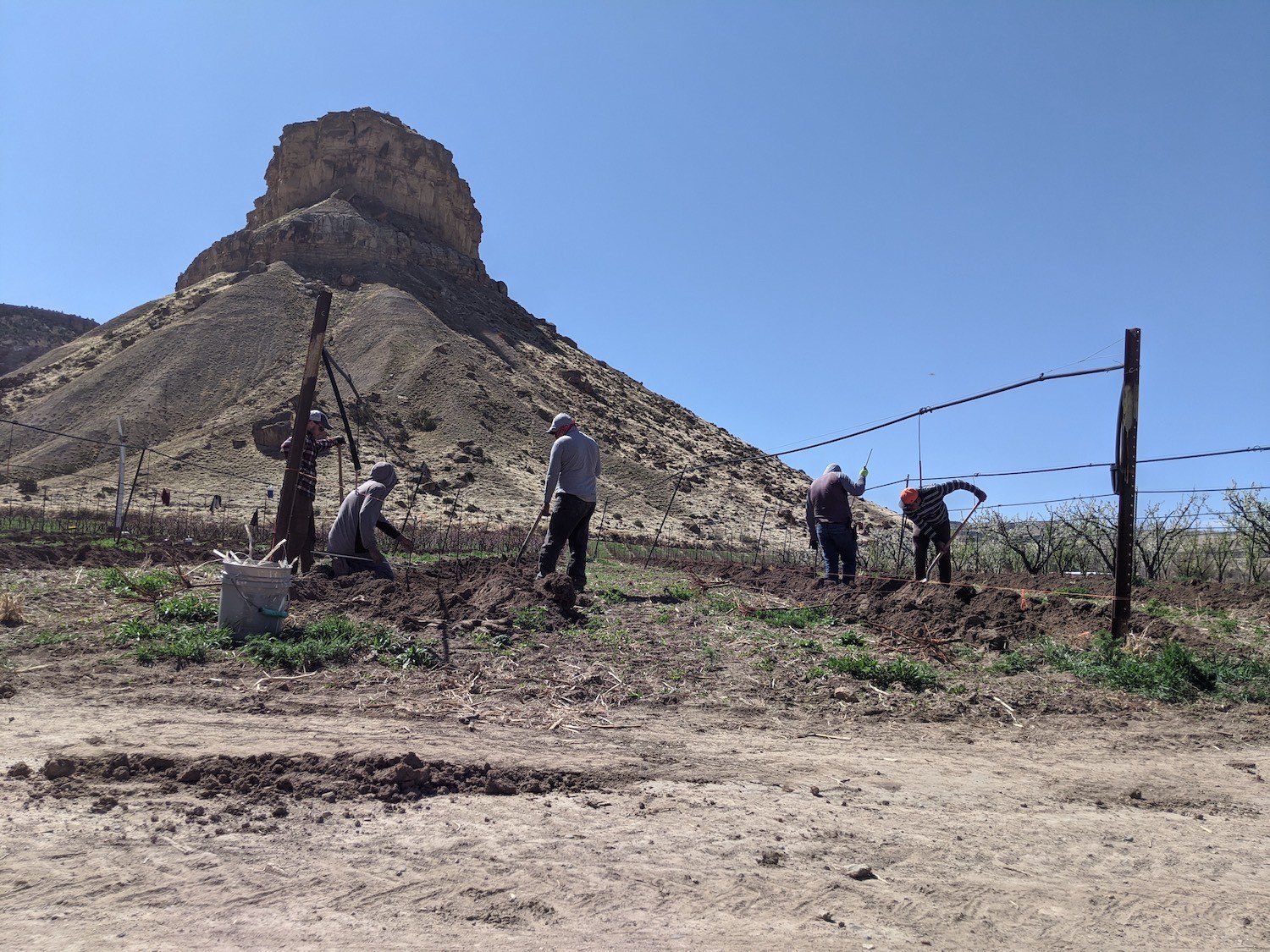“Ghost kitchen” takes on a new meaning for restaurants faced with the complex causes of a labor logjam.
Restaurants across the U.S. are desperate to hire as outdoor dining season begins, indoor dining restrictions lift, and vaccination rates trend upwards. But despite the hospitality industry losing nearly one-third of its jobs during the pandemic, workers aren’t coming back. In many cases, they’re not even applying.
In Philadelphia, Sofia Deleon managed to keep the seven-member team at her Guatemalan restaurant, El Merkury, employed through the pandemic, getting by on takeout, delivery, and cooking meals for organizations like World Central Kitchen. But she’s struggling to find dishwashers, cashiers, and servers for a new location she’s opening in a nearby food hall this spring.
“I have had zero luck,” she said. Even with pay starting at $12 an hour and paid vacation—better wages and perks than many quick-serve restaurants in the city—she’s had virtually no applicants, let alone qualified ones. “I’ve asked friends of friends, other friends, posted it, posted on social media and it’s been crickets. Everybody seems to be having the same problem.”
“It has been an extreme challenge. I can’t even activate my areas outside because I don’t have enough service staff.”
In highly competitive markets like Southern California, owners are rolling out unheard-of perks. “We’re offering a hiring incentive where if you bring a friend on referral, if they last a certain amount of time, you get a $250 bonus, and it’s $500 for managers,” said chef Jason Neroni, owner of 350-seat restaurant The Rose in Venice, a beachside community in Los Angeles. “It has been an extreme challenge. I can’t even activate my areas outside because I don’t have enough service staff.”
Neroni brought back about half his 250 employees after the first shutdown last spring. But after another hit right before the holidays, he said, many workers moved out of the area or shifted into other professions. To boost capacity from this winter’s cutback to 220 seats, he’s added seating for 100 in the parking lot—but without bartenders, floor managers, and servers to work them, those tables sit empty.
[Subscribe to our 2x-weekly newsletter and never miss a story.]
Of course, not every restaurateur is in the position to attract candidates this way. In Philadelphia, Sojourn Restaurant Group owner Jill Weber is struggling to fill four front-of-house openings at Jet Wine Bar—and when the adjacent wine garden opens up later this spring, she’ll need another five workers to run it. Despite a fully-staffed kitchen, she can’t open the group’s newest concept, Sor Ynez, because she can’t find servers. She’s considering temporary staffing agencies as a last resort.
“Whether they have two weeks of experience or 10 years, I don’t care as long as we can trust them.”
“There’s stress within our group because I’m like, give me somebody to throw some food out there. But we want to make sure the customer understands this is a professional setting,” Weber said. “Whether they have two weeks of experience or 10 years, I don’t care as long as we can trust them.”
Front-of-house positions, especially entry-level, higher-turnover jobs like hosts and bussers, have proven hardest to fill, even for owners like these, who already offered higher-than-usual pay and benefits like health insurance, paid time off, and paychecks during mandated lockdowns.
Capacity restrictions and distancing requirements have drastically cut wages for workers like servers, who rely on tips to make up for an hourly wage at or near the federal tipped minimum of $2.13 in many parts of the country, prompting them to find better-paying work. Others shifted to better-paying jobs in fields that boomed while dining imploded, such as retail fulfillment, especially as companies like Amazon and Target pay or have raised hourly wages to $15.
“In this industry, you have career hospitality professionals, and then you have all the other people who work in the industry as a second job or side job. That portion of the workforce is going to be trickling in depending on how their priorities have shifted.”
The problem doesn’t just affect independent or higher-end establishments. Fast-food mega-chains like McDonald’s and Taco Bell are pushing to hire thousands of workers in an effort to reopen dining rooms, even holding drive-up spot interviews in parking lots. Some are focused on keeping current employees in place: Yum! Brands is offering bonuses to general managers at company-owned outlets of Pizza Hut, Taco Bell, The Habit Burger Grill and KFC, while Chipotle just expanded its Cultivate Education program, which offers free tuition for employees pursuing degrees in areas like hospitality and agriculture.
“In this industry, you have career hospitality professionals, and then you have all the other people who work in the industry as a second job or side job,” said Alice Cheng, founder and CEO of Culinary Agents, a hospitality career website. “That portion of the workforce is going to be trickling in depending on how their priorities have shifted.”
The problem extends beyond larger cities, where workers may have more employment options. Shortages in restaurant labor from cashiers to cooks to managers have been reported in smaller markets in North Carolina, Arizona, central New York, and Pennsylvania.
“You’re seeing restaurants shift the way they’re working because people aren’t willing to come back to that work environment.”
Sara Bradley, owner of The Freight House in Paducah, Kentucky, never lacked qualified applicants before the pandemic. With an open kitchen, a locally sourced menu, and high starting pay, there aren’t many concepts like hers in the area. Now, as she seeks to add servers to the team she’s kept employed for the past year, Bradley estimates that she’s received a quarter of the usual volume of candidates, and three-quarters of those have no background in the industry.
“For our restaurant, where there’s a lot of upselling and a lot of ingredient knowledge, we train people, but it’s better if they have a little experience,” she said.
Some restaurant owners acknowledge that enforced time away from work may have given former employees a new perspective on the industry.
“This reprieve has given for a lot of people a chance to contemplate their lives, where they’re going and where they want to be, and for the industry to take a look at itself,” said Lisa Schroeder, who owns Mother’s Bistro in Portland, Oregon. She waited to reopen until she was at 50 percent indoor capacity and her employees could be vaccinated but hasn’t been able to find qualified hosts or bussers. “You’re seeing restaurants shift the way they’re working because people aren’t willing to come back to that work environment.” She and her husband, who has never worked in restaurants, expect to step in to fill the gap.
“I didn’t trust anyone in the restaurant scene that was still open to give me the proper amount of hours and not just throw a bunch of things at me and say ‘Get it done.’”
Weber raised entry-level server wages from Pennsylvania’s tipped minimum of $2.83 per hour to $8 when the pandemic struck, ensuring that staff don’t go home with less than $15 per hour. Bradley worked with her servers to institute a tip pooling system so reduced capacity wouldn’t drastically cut wages for some but not others; they also instituted a standard one-percent tipout for hosts.
Other owners think that increases in unemployment benefits—in both amount and duration—have made some workers reluctant to come back to work. But undocumented workers, who can’t receive unemployment, make up 10 percent of foodservice employees nationwide and up to 40 percent in large cities. And eligible employees like Troy Wilson consider benefits as a means to consider whether, when, and how they’ll come back to what can be an inequitable and exploitative industry.
After burning out in high-pressure kitchens, Wilson enjoyed working as chef de cuisine at a tiny Philadelphia BYOB four days a week; he lost that job when restaurants first went dark. Since then, he’s been able to get by on unemployment but feels wary of getting another restaurant job—not only because of uncertainty around safety but because he wants saner hours and a healthier lifestyle, something understaffed kitchens wouldn’t be able to offer.
“I wanted to be able to focus on my self-care,” Wilson said. “I didn’t trust anyone in the restaurant scene that was still open to give me the proper amount of hours and not just throw a bunch of things at me and say ‘Get it done.’”
“People are still concerned about personal well-being and safety.”
Self-care includes not getting sick, a variable that one advocate sees as a big obstacle to re-entry. “What is not sufficiently spoken about is the rate of vaccines of hospitality workers, especially when the restaurants don’t provide healthcare,” said Dr. Sekou Siby, executive director of Restaurant Opportunities Centers United, a nonprofit that seeks to improve conditions for the industry’s lowest-paid employees.
In many parts of the country, indoor dining restrictions were loosened or lifted months before restaurant workers were eligible to be vaccinated. States have prioritized vaccine access for people over 65, but the average foodservice worker was 28.9 years old in 2020, according to the U.S. Bureau of Labor; although 39 states have opened vaccines to all adults 16 and over as of April 8, restaurant workers in many places still haven’t received their shots. To get experienced industry workers back to jobs, Siby said, states should set targets for foodservice worker vaccinations that are linked to reopenings.
Restaurants that will wait to reopen indoor dining until staff are fully vaccinated are the kinds of employers workers are looking for. “People are still concerned about personal well-being and safety,” said Cheng. “If you’re an unvaccinated server and you can wait, maybe you’re going to do that.”
She’s noticed a trend that suggests things will even out—though that might not happen until later this year or early 2022. In cities like Philadelphia, where job postings have ballooned over the past few weeks, job seekers on Culinary Agents are looking at and saving opportunities, even if they aren’t actively applying. “That tells us that people are kind of waiting and seeing,” she said.
As for Wilson, he’ll soon be headed back to work—although if his latest round of unemployment compensation hadn’t been held up in the system, he probably would have waited a little longer. He’ll be on staff at Korshak Bagels, a new shop where each employee rotates through different tasks, pay starts at $15 per hour plus tips, and the ingredients, menu, and workplace culture align with his own beliefs.
“I feel it’s something I could put my hands in and feel good about doing, still do things I want to do on the side, and take care of my mental and physical health,” he said. “That’s priority number one for me and should be for a lot of industry workers right now.”





